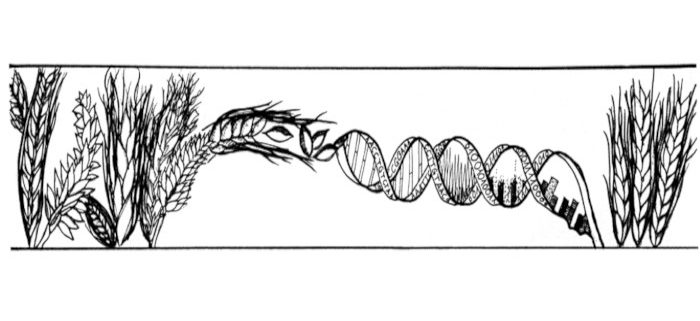Faster and easier access to genetic information with long-read sequencing
Martin Mascher, Leibniz Institute of Plant Genetics and Crop Plant Research Gatersleben, Germany
Mona Schreiber, University of Marburg, Germany
Background: The genome encodes the entire genetic information of an organism. It is stored as a DNA nucleotide sequences in the nucleus of each cell of an organism. The DNA is organized into chromosomes, structures large enough to be visible under a microscope. The genome of the crop plant barley consists of about five billion nucleotides. Sequencing and assembling a genome means reading out all its nucleotides and arranging them into a computer-readable text. Genome assembly used to be very difficult. It took over ten years to assemble the genome sequence of one barley variety. Genomes differ between the individuals of one species and we can learn a lot about diversity in our crops by comparing genomes of different varieties. Researchers that want to study many genomes need a fast and reliable method for sequence assembly.
Question: We wanted to know if a new method for DNA sequencing, accurate long-read sequencing, can make genome assembly faster and easier.
Findings: We used the PacBio HiFi sequencing method to generate accurate long-reads of the barley genome and assembled the reads into sequences representing entire chromosomes. We also made genome assemblies from other types of sequence reads generated with alternative methods such as short reads or long-reads with high error rates. When we compared the different assemblies to each other, the HiFi assembly performed best. It represented the largest fraction of genes, also those that are present in multiple, nearly identical copies. The HiFi assembly also captured almost all of non-coding and highly repetitive sequences between genes. Importantly, the HiFi method was very fast so that we were able to generate accurate and complete genome sequences in a few days.
Next steps: We will use HiFi sequencing to assemble genomes of more cultivated varieties and wild relatives of barley. We expect to find genetic variants, for example in diseases resistance genes, that may help enrich the genetic diversity of barley.
Martin Mascher, Thomas Wicker, Jerry Jenkins, Christopher Plott, Thomas Lux, Chu Shin Koh, Jennifer Ens, Heidrun Gundlach, Lori B Boston, Zuzana Tulpová, Samuel Holden, Inmaculada Hernández-Pinzón, Uwe Scholz, Klaus F X Mayer, Manuel Spannagl, Curtis J Pozniak, Andrew G Sharpe, Hana Šimková, Matthew J Moscou, Jane Grimwood, Jeremy Schmutz, Nils Stein (2021) Long-read sequence assembly: a technical evaluation in barley. Plant Cell. https://doi.org/10.1093/plcell/koab077






